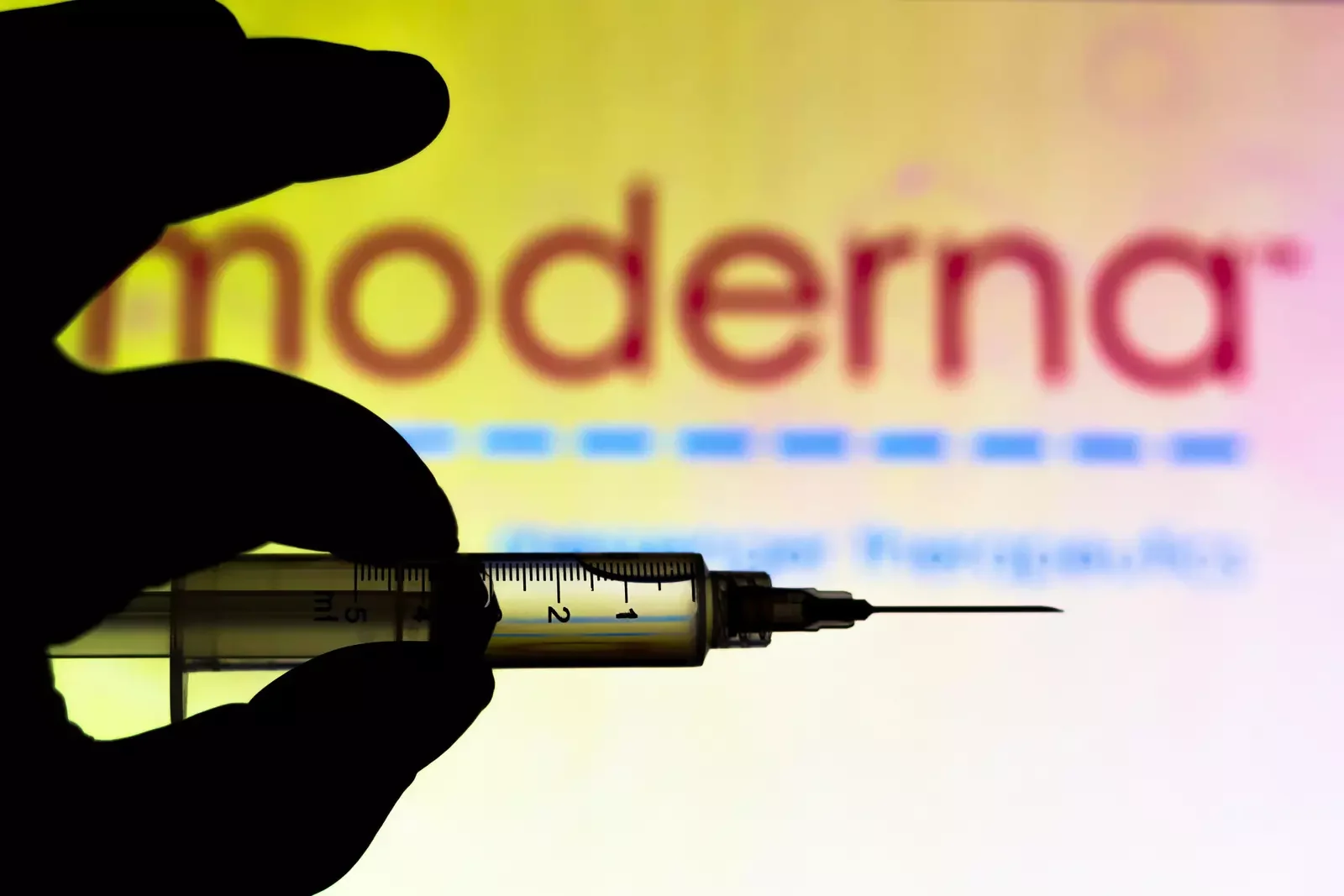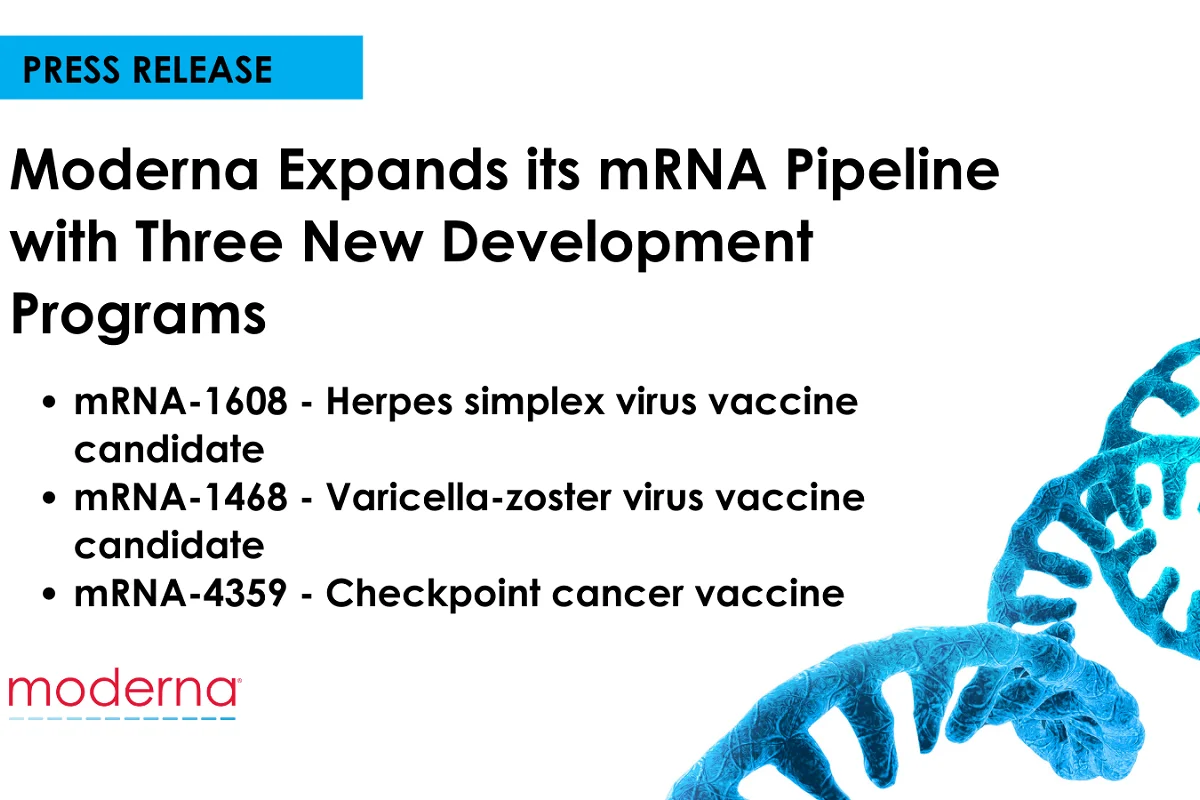
Moderna initiated the start of work on the creation of new drugs based on matrix ribonucleic acid (mRNA or mDNA). These vaccines include medicines that fight herpes simplex virus (HSV), varicella-zoster virus (VZV) and cancer. The mRNA-backed agents were designated 1608, 1468, and 4359, respectively. Earlier, Moderna announced the launch of human trials of an mRNA drug to fight HIV.

Varicella zoster and herpes simplex viruses are latent, that is, remaining in the body when infected forever and capable of provoking chronic incurable diseases. Currently, Moderna is working on several vaccines against latent viruses: cytomegalovirus infection, Epstein-Barr virus, HIV, chickenpox and herpes simplex.
According to Moderna CEO Stéphane Bansel, drugs developed to counteract HSV and VZV will improve the quality of life of a person suffering from symptomatic manifestations of the disease. He also believes that an anti-cancer drug based on checkpoint inhibitors can prevent a decrease in the immune response to cancer cells and thereby help the body fight the disease. Finally, Bancel points out that Moderna is also developing other potentially effective mDNA drugs.
An agent for combating HSV is also a candidate drug for combating the herpes virus type 2 (HSV-2). These viruses are divided into two types: the first covers the lips, mouth, face and genitals; the second one primarily hits the genitals. Both infections are latent, therefore, after the initial infection, they are able to reactivate and infect the skin again. It is not possible to cure these diseases. In the United States, nearly 18.6 million adults aged 18-49 have HSV-2. Looking around the globe, 5% of the population in the same age group are HSV-2 seroresistant, meaning they have antibodies.
One in three adults will develop shingles during their lifetime. The likelihood of getting sick with them increases after fifty years. The deterioration of immunity in elderly patients contributes to the deterioration of the immune response to VZV, which makes it possible for the infection to reactivate from covertly infected neurons. As a result, patients experience rashes and irritation. The varicella-zoster virus is the cause of lichen. Deep complications of the disease may include postherpetic pain (10-13% of cases), bacterial infections, cranial and peripheral paresis. For 1-4% of cases, it is necessary to hospitalize the patient. The severity of the course and the possibility of complications increases with age. The spread of the disease is currently on the rise across the globe.
The above infections are especially dangerous for people with weakened immune systems, especially for patients with HIV or those recovering from organ transplants.
Melanoma is the 5th most diagnosed cancer in the United States. It accounts for 5.3% of newly diagnosed oncology diagnoses and 1.5% of cancer-related deaths. Cutaneous melanoma is an oncological disease that occurs in melanocytes (cell formations responsible for the pigmentation of the skin). At the time of diagnosis at the local stage, the 5-year survival rate is around ninety-five percent. With a regional or metastatic degree (IIIB +), this indicator drops to around 30-60%. Nearly 18,000 newly diagnosed patients in the United States have stage IIIB+ skin melanoma.

Varicella zoster and herpes simplex viruses are latent, that is, remaining in the body when infected forever and capable of provoking chronic incurable diseases. Currently, Moderna is working on several vaccines against latent viruses: cytomegalovirus infection, Epstein-Barr virus, HIV, chickenpox and herpes simplex.
According to Moderna CEO Stéphane Bansel, drugs developed to counteract HSV and VZV will improve the quality of life of a person suffering from symptomatic manifestations of the disease. He also believes that an anti-cancer drug based on checkpoint inhibitors can prevent a decrease in the immune response to cancer cells and thereby help the body fight the disease. Finally, Bancel points out that Moderna is also developing other potentially effective mDNA drugs.
An agent for combating HSV is also a candidate drug for combating the herpes virus type 2 (HSV-2). These viruses are divided into two types: the first covers the lips, mouth, face and genitals; the second one primarily hits the genitals. Both infections are latent, therefore, after the initial infection, they are able to reactivate and infect the skin again. It is not possible to cure these diseases. In the United States, nearly 18.6 million adults aged 18-49 have HSV-2. Looking around the globe, 5% of the population in the same age group are HSV-2 seroresistant, meaning they have antibodies.
One in three adults will develop shingles during their lifetime. The likelihood of getting sick with them increases after fifty years. The deterioration of immunity in elderly patients contributes to the deterioration of the immune response to VZV, which makes it possible for the infection to reactivate from covertly infected neurons. As a result, patients experience rashes and irritation. The varicella-zoster virus is the cause of lichen. Deep complications of the disease may include postherpetic pain (10-13% of cases), bacterial infections, cranial and peripheral paresis. For 1-4% of cases, it is necessary to hospitalize the patient. The severity of the course and the possibility of complications increases with age. The spread of the disease is currently on the rise across the globe.
The above infections are especially dangerous for people with weakened immune systems, especially for patients with HIV or those recovering from organ transplants.
Melanoma is the 5th most diagnosed cancer in the United States. It accounts for 5.3% of newly diagnosed oncology diagnoses and 1.5% of cancer-related deaths. Cutaneous melanoma is an oncological disease that occurs in melanocytes (cell formations responsible for the pigmentation of the skin). At the time of diagnosis at the local stage, the 5-year survival rate is around ninety-five percent. With a regional or metastatic degree (IIIB +), this indicator drops to around 30-60%. Nearly 18,000 newly diagnosed patients in the United States have stage IIIB+ skin melanoma.
Login or register to post comments
Comments 0